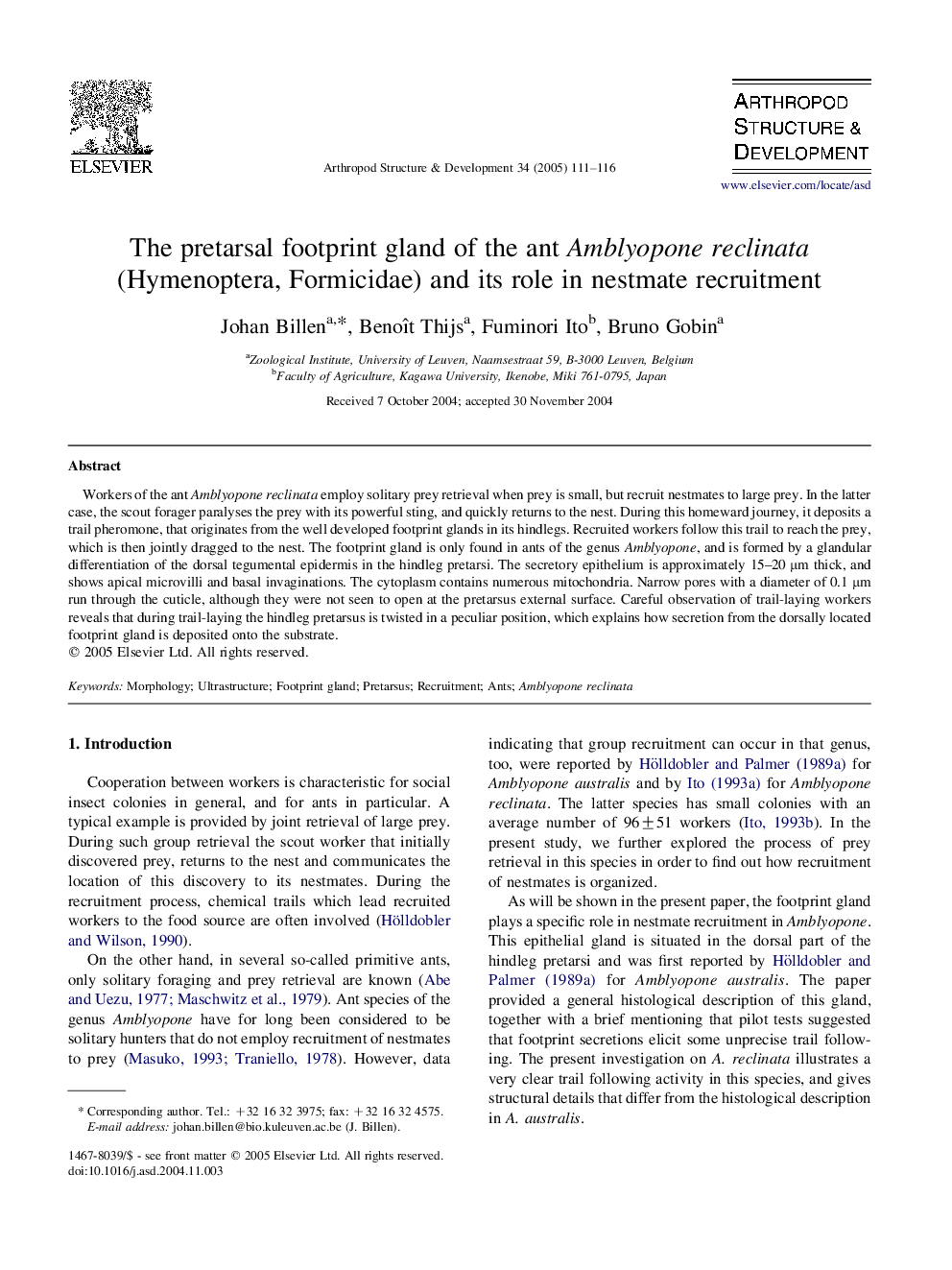| Article ID | Journal | Published Year | Pages | File Type |
|---|---|---|---|---|
| 9104163 | Arthropod Structure & Development | 2005 | 6 Pages |
Abstract
Workers of the ant Amblyopone reclinata employ solitary prey retrieval when prey is small, but recruit nestmates to large prey. In the latter case, the scout forager paralyses the prey with its powerful sting, and quickly returns to the nest. During this homeward journey, it deposits a trail pheromone, that originates from the well developed footprint glands in its hindlegs. Recruited workers follow this trail to reach the prey, which is then jointly dragged to the nest. The footprint gland is only found in ants of the genus Amblyopone, and is formed by a glandular differentiation of the dorsal tegumental epidermis in the hindleg pretarsi. The secretory epithelium is approximately 15-20 μm thick, and shows apical microvilli and basal invaginations. The cytoplasm contains numerous mitochondria. Narrow pores with a diameter of 0.1 μm run through the cuticle, although they were not seen to open at the pretarsus external surface. Careful observation of trail-laying workers reveals that during trail-laying the hindleg pretarsus is twisted in a peculiar position, which explains how secretion from the dorsally located footprint gland is deposited onto the substrate.
Related Topics
Life Sciences
Agricultural and Biological Sciences
Insect Science
Authors
Johan Billen, Benoît Thijs, Fuminori Ito, Bruno Gobin,
